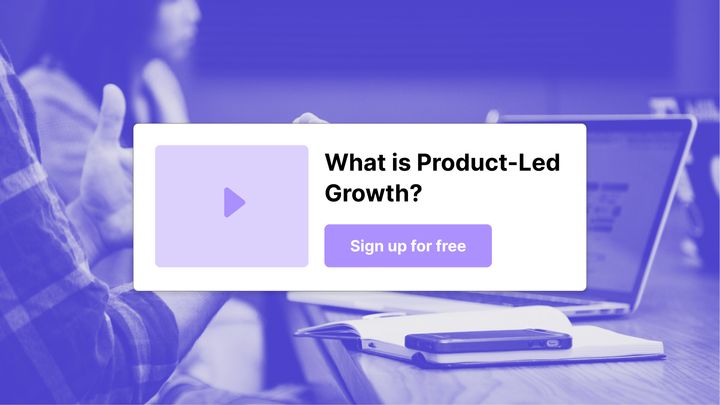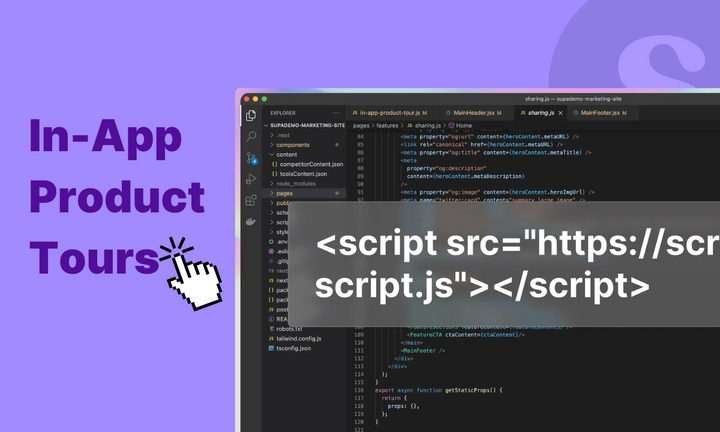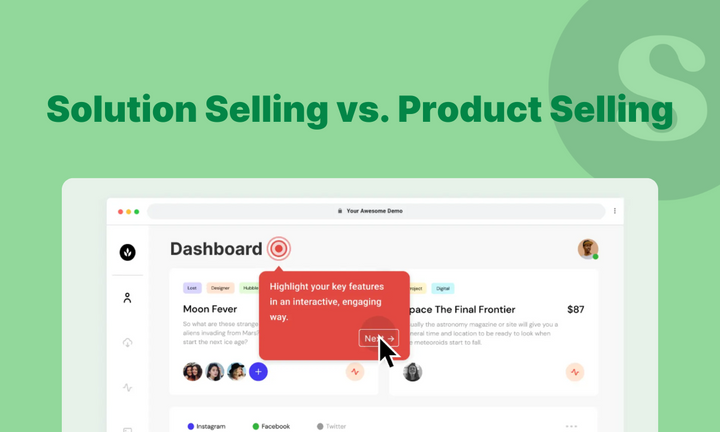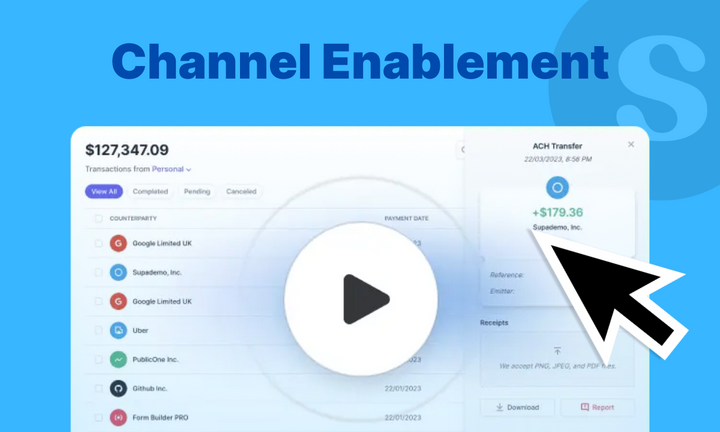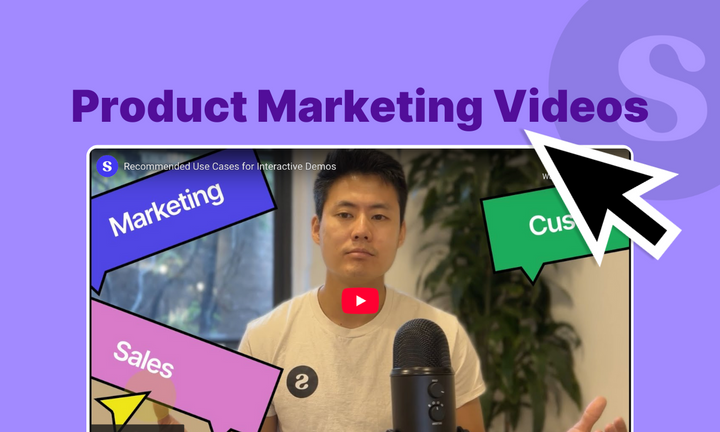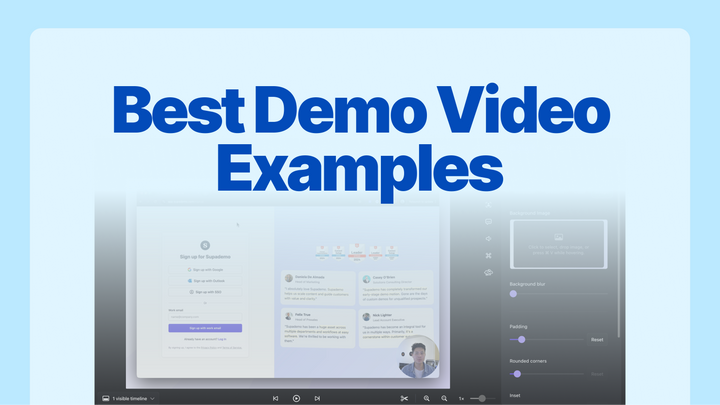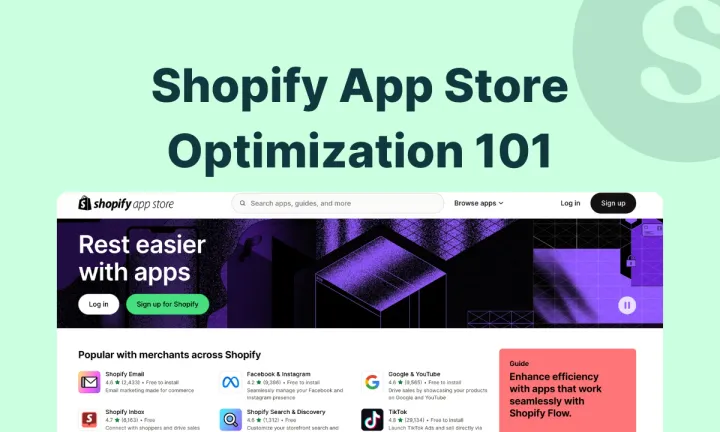Product-led growth (PLG) is a growing trend that focuses on leveraging the product itself as the primary driver of customer acquisition, conversion, retention, and expansion. This approach aims to create a seamless and valuable user experience within the product, encouraging self-service and organic growth through user adoption.
In this comprehensive blog post, we'll explore the fundamentals of product-led growth, its key principles, strategies, and its profound impact on businesses.
Understanding Product-Led Growth
Product-Led Growth is centered around the idea of allowing the product to act as the primary means of driving customer acquisition and retention.
Instead of relying heavily on sales or marketing tactics (i.e. filling out questionnaires, booking a discovery call, or having to set up a demo call), PLG emphasizes the creation of a product experience that not only attracts users but also guides them towards realizing the product's value independently and asynchronously.
Companies like Slack, Calendly, and Zoom helped pioneer this movement and have inspired thousands of startups to follow suit.
The Evolution of Product-Led Growth
For years, traditional go-to-market strategies focused on sales-led growth, where different teams—product, marketing, and sales—operated in distinct silos. Marketing's job was to generate leads, primarily through gated content or other methods, which sales teams would then pursue.
Prospective customers had to book demos, attend calls, or fill out forms just to get a glimpse of the product or understand its pricing. This process often led to long sales cycles, where many leads weren’t ready to buy or even fully aware of the problem the product was solving.
As companies expanded, this approach showed its flaws. Marketing teams were judged by the volume of "marketing qualified leads" (MQLs) they delivered, which often meant quantity over quality. Sales teams, on the other hand, had to sift through these leads, many of whom weren’t ready to commit.
The disconnect between marketing and sales often led to bloated and costly processes, with the customer ultimately paying the price for these inefficiencies.
The landscape began to change with the rise of SaaS (Software-as-a-Service) and subscription models. Startups realized they didn’t need expensive sales infrastructures to bring products to market.
Time was of the essence, and getting products into users’ hands quickly became the priority. Thus, the idea of "product-led growth" emerged—a model that let the product itself do the selling.

With product-led growth, companies shifted from high-pressure sales tactics to a "try before you buy" approach. Free trials and freemium models became the norm, allowing users to experience the value of the product firsthand without having to go through a lengthy sales process.
The focus was on user experience: the better and more valuable the product was to users, the more likely they were to convert into paying customers. This approach also enabled teams to gather real-time feedback and iterate on the product, making improvements based on actual user experiences, which created a continuous loop of value and refinement.
By allowing users to drive the decision-making process through hands-on experience, product-led growth proved to be more efficient, customer-centric, and ultimately scalable for modern businesses.
Sales-Led vs. Product-Led Growth
Here are the primary differences between sales-led growth and product-led growth:
Sales-Led Growth:
- Targets senior decision-makers
- Limits direct access to the product behind sales interactions
- Requires engagement with a sales representative
- Often results in longer, more complex sales cycles
- Can increase customer acquisition costs
- Frequently involves professional setup and configuration
Product-Led Growth:
- Focuses on empowering the end user
- Allows potential customers to explore the product freely
- Shifts marketing efforts toward education and product value
- Tends to shorten the sales cycle as users experience immediate value
- Can lower the cost of acquiring customers
- Does not depend on complex rollouts or configurations for adoption
Core Principles of Product-Led Growth
- User-Centric Approach: PLG prioritizes understanding user needs and designing a product experience that aligns seamlessly with those needs.
- Intrinsic Product Value: The product itself should inherently provide value and address user pain points, creating a compelling reason for users to adopt it.
- Self-Service Model: Enable users to easily discover, onboard customers asynchronously, and help them derive value from the product without extensive assistance or involvement from sales teams.
- Data-Driven Iteration: Utilize user data and feedback to continuously iterate and improve the product based on user behaviors and preferences.

Strategies to Drive Product-Led Growth
- Freemium or Free Trials: Offer free versions or trial periods of the product, allowing users to experience its core functionalities before committing to a purchase. Some companies use reverse trials to showcase all features prior to downgrading users to the freemium plan after the trial.
- Seamless Onboarding Experience: Design intuitive and frictionless product-led onboarding processes that guide users through the product's features and value proposition.
- In-Product Engagement and Education: Provide in-app tutorials, walkthroughs, and interactive elements that educate users on how to maximize the value of the product.
- User-Generated Virality: Implement features or mechanisms within the product that encourage users to invite and onboard others, fostering organic growth.
Example of Product-Led Growth: Interactive Demos
Interactive demos are step-by-step, self-paced demonstrations of a product or workflow. Within product-led-growth, interactive demos are an effective way to enable prospects and customers to experience the product's features in an engaging and frictionless way.
This hands-on experience helps potential users and existing customers quickly grasp a product or feature's "aha moment", without a paywall, subscription, or sales demo. This helps breed trust, confidence, and ease of adoption.
These demos have many use cases and can drive product-led growth across diverse areas of the business.

• 3 awesome examples of interactive demos for customer success
• 3 awesome examples of interactive demos for sales / enablement
• 3 awesome examples of interactive demos for product marketing
Impact of Product-Led Growth
The benefits of product-led growth are widespread and can vary depending on the size of your company and the industry you operates in.
However, commonalities across industries include more efficient growth, lower customer acquisition cost, and enhanced customer retention:
- Accelerate User Adoption: PLG facilitates faster user adoption by enabling users to independently explore and understand the product's value proposition.
- Improve User Retention: By focusing on delivering ongoing value, PLG encourages higher user engagement and satisfaction, leading to increased retention rates.
- Lower Customer Acquisition Costs: Leveraging a product-led approach often results in reduced customer acquisition costs due to organic growth and higher conversion rates.
Implementing Product-Led Growth
Implementing product-led growth (PLG) effectively involves several straightforward strategies that can significantly enhance customer acquisition, conversion, and retention through a product-centric approach:
- Add a Free Trial or Freemium Plan: Allow users to "try before they buy" and arrive at your product's "aha moment" or value moment before they are forced to purchase.
- User-Centric Product Design: Develop the product with a deep understanding of user needs, preferences, and pain points to create a user-friendly and valuable experience. Ensure customers can easily navigate and find answers to day-to-day product related questions.
- Use Asynchronous, Accessible Onboarding and Tutorials: Use tools like interactive demos and guides to embed in support docs, knowledge bases to empower users to learn about features and onboard themselves at their own pace.
- Continuous Data Analysis: Gather and analyze user data to identify usage patterns, bottlenecks, and opportunities for product improvement. This can be used to rapidly iterate and improve your product.
- Iterative Development and Experimentation: Implement an agile approach to product development, continuously iterating based on user feedback and running experiments to optimize user experience.
By implementing these strategies, companies can leverage their products as the primary growth driver, creating a scalable and efficient path to expanding their user base and improving your sales motion.
Wrapping Up!
Product-led growth represents a fundamental shift in business strategy by placing the product experience at the forefront of growth efforts. By focusing on creating a product that is intuitive, valuable, and self-explanatory, PLG empowers users to discover and adopt products independently.
While this approach may not be for every company, platforms like Supademo allow any company to implement product-led tactics into their sales, customer success, or marketing functions in an easy, high-ROI way.
So, head over to Supademo to start creating engaging interactive demo – it's free!



